Packers 2021 Redraft: Second-Round Pick Josh Myers
GREEN BAY, Wis. – Hindsight is always 20/20, especially when it comes to the NFL Draft. A lot of things go into whether or not a draft pick was worth the investment. Was the scouting department’s projection correct? Was the player a good fit for the scheme? Was he given the proper coaching? How does he handle life as a professional?
With that as a backdrop, let’s revisit the Green Bay Packers’ 2021 draft class in a series of stories. Nine players were selected, including second-round pick Josh Myers with the 62nd overall selection.
Before the Draft
The Packers have had a long history of top-notch center play. The latest in that line was Corey Linsley. A fifth-round pick in 2014, Linsley was thrust into the Week 1 lineup against Seattle. The Seahawks and their indomitable defense, salivating in anticipation of facing a rookie, said prayers for Linsley.
Linsley didn’t need any prayers that night. In fact, he had a strong debut and a strong rookie season, and only got better. In 2020, he was named to the All-Pro team. The Packers let him go last offseason, a combination of the team’s salary-cap problems, age (he was set to turn 30 before training camp) and some injury history. Thus, they went into the 2021 NFL Draft needing a center.
Packers Select Josh Myers in Second Round
It’s this pick that’s the inspiration for this series. The consensus top center prospect in the draft class was Oklahoma’s Creed Humphrey.
Humphrey started 37 games during his final three seasons. In 2020, he was named the Big 12’s Offensive Lineman of the Year and became a two-time All-American.
Along with elite performance at a big-time program, Humphrey dominated the pre-draft process. Sooners defensive end Ronnie Perkins called Humphrey “Frankenstein” and a “freak.” Relative Athletic Score, an athletic analytics system created by Kent Platte, takes player measurements and puts them on a 0-to-10 scale compared to their position group. Humphrey scored a perfect 10 and ranked first out of all centers dating to 1987.
With the Packers on the clock at No. 62, “need” and “best player available” seemed aligned. But, instead of taking Humphrey, general manager Brian Gutekunst went with Ohio State’s Myers. Humphrey went at No. 63 to the Kansas City Chiefs.
Asked about Myers over Humphrey, Gutekunst said, “It was a pretty good center class up at the top this year, and I thought we had some options. But Josh, his size, his athleticism, his power, how smart he is, what they asked him to do at Ohio State and understanding he could handle some of that here, I think was intriguing to us. I think he fit what we’re all about.”
At the Time, I Would Have Picked …
Humphrey.
The Verdict
Based on rookie results, Gutekunst botched this one. Humphrey was voted the All-Rookie center. While he was not voted to the Pro Bowl team or selected to The Associated Press’ prestigious All-Pro team, Humphrey was selected first-team All-Pro by Pro Football Focus. He was the only rookie to garner first-team honors.
In 17 games, Humphrey allowed one sack and 10 total pressures. Myers, on the other hand, allowed zero sacks and eight total pressures in six games after missing time with an injured finger and a knee injury that required surgery. Take PFF’s grades for what they’re worth, but Humphrey was the No. 1-ranked center as a run blocker – not just among rookies but overall.
Obviously, it’s far too soon to say whether Gutekunst should have drafted Humphrey. How might Myers’ season have turned out had he been able to string together 17-plus consecutive starts? But, from a one-year perspective, this looks like a missed opportunity. It will be interesting to track their careers and see if Myers becomes the type of player the Packers projected.
“I think I still have a lot to prove and I’m excited to get the opportunity to do that next year,” Myers said at the end of the season. “I’m just looking forward to a healthy season. I just felt like I didn’t have any flow to this season. I was in and out and that was frustrating.”
Packers Redraft Series
It's always fun looking back on the NFL Draft and seeing who was picked, thinking about who you would have picked, and how it all turned out. So, in Part 1 of a 2021 #Packers redraft, it's first-round pick Eric Stokes.https://t.co/8psp7XI61X
— Bill Huber (@BillHuberNFL) February 7, 2022
Grading the Offensive Line
LT David Bakhtiari ($10.97 million cap charge; ranking No. 10 among OTs)
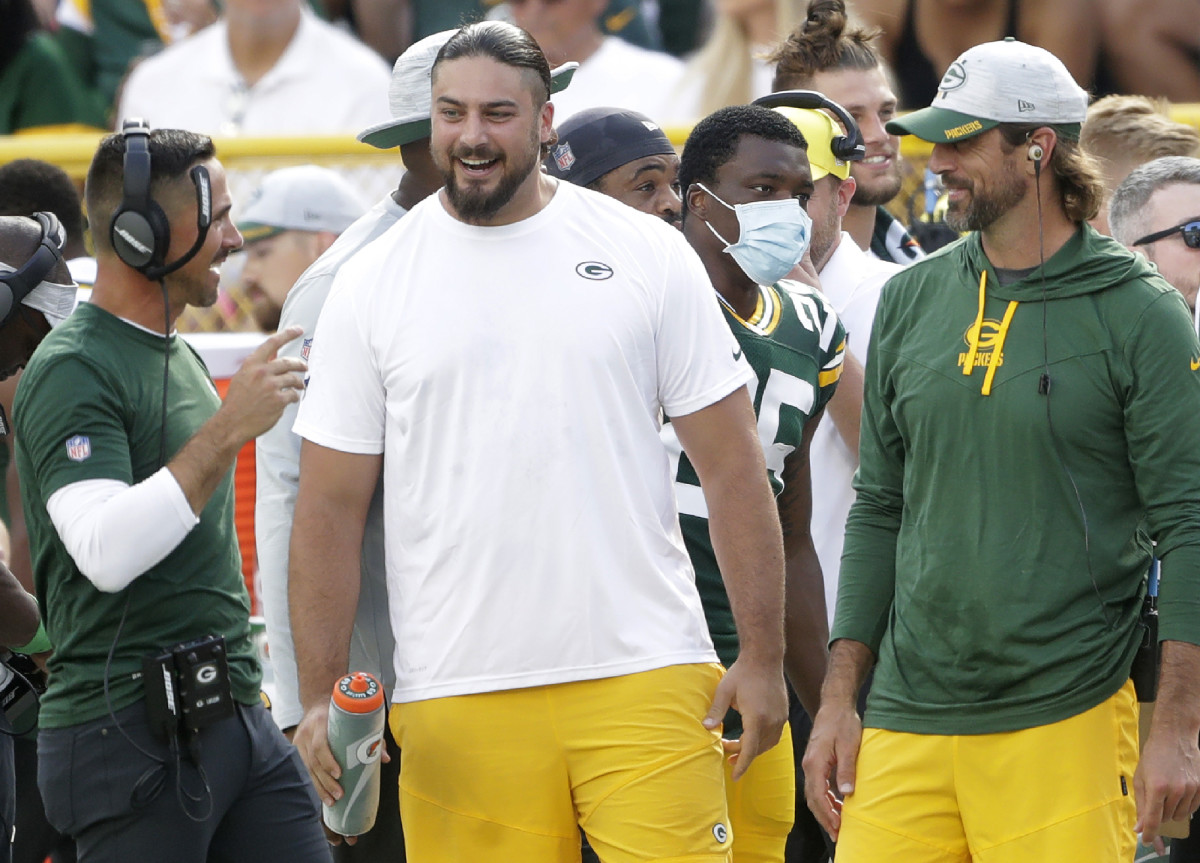
The five-time All-Pro had a year he’d love to forget. The ACL tear he sustained late in the 2020 season perhaps prevented the Packers from beating the Buccaneers and getting to the Super Bowl. Bakhtiari targeted a midseason return but it just didn’t happen. The knee never felt right and there was a disconcerting fluid buildup. So, he had a follow-up procedure done. When he returned for the finale at Detroit – and somehow played as if he were in midseason form – it meant he’d be back for the playoffs and a potential Super Bowl run.
Actually, it’s not what it meant. Bakhtiari was inactive for the loss against San Francisco. That meant he was paid $118,518.52 for each of his 27 snaps. Now, the hope is Bakhtiari will be able to return to form for the final three years of his contract.
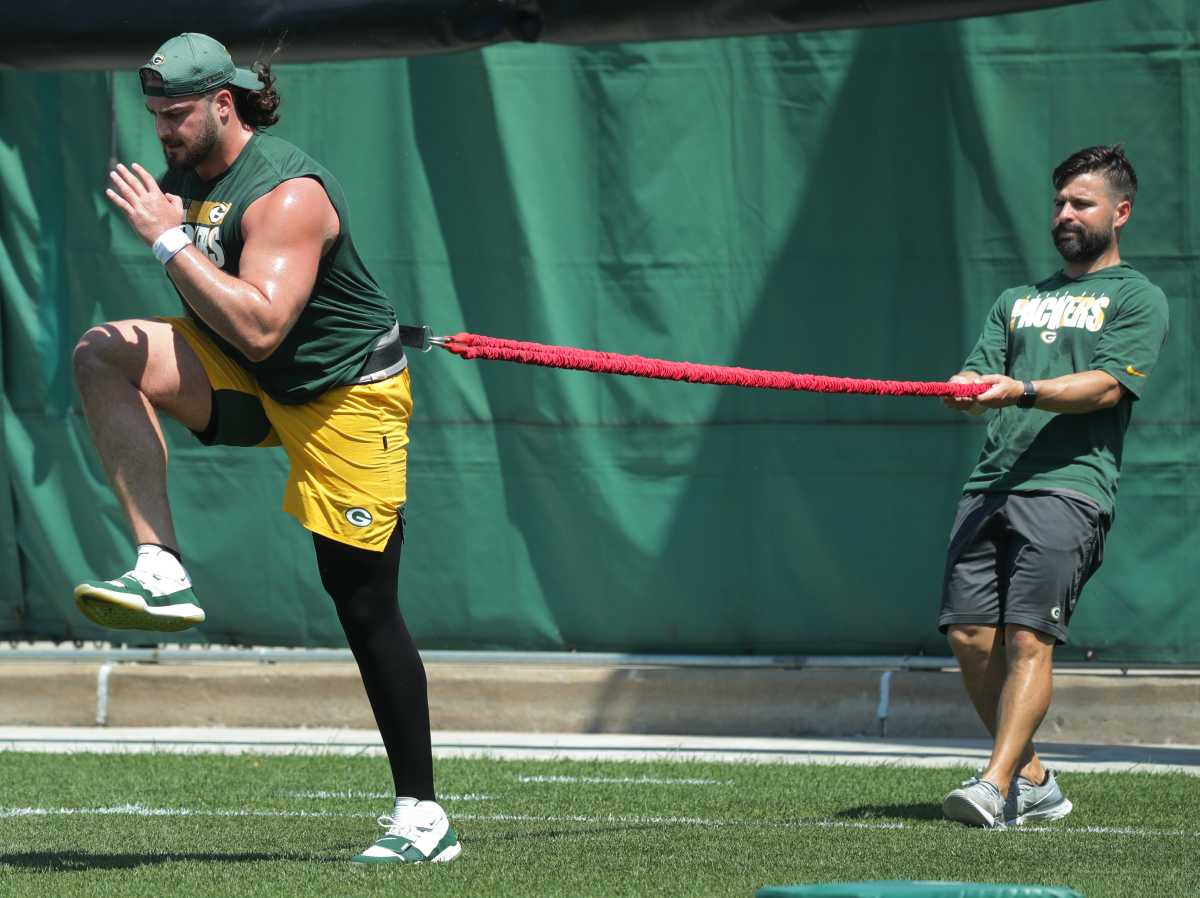
Speaking of his contract, a restructure created $8.3 million of cap space for 2021. His new cap number for 2022 will be $22.2 million, fourth-highest among tackles. Presumably, the Packers will turn his $9.5 million roster bonus into signing bonus and add some void years to his contract to lesson the blow. That sounds great but it makes the long-term health of his knee a bigger priority.
The grade isn’t a knock on Bakhtiari, his comeback or his mind-set. It’s not his fault that he didn’t recover as well as anyone had hoped. It’s not as if he was slamming cans of beer and eating platters of poutine rather than rehabbing. It’s just the reality.
Grade: F.
LG Elgton Jenkins ($1,849,805 cap charge; ranking No. 44 among OGs)
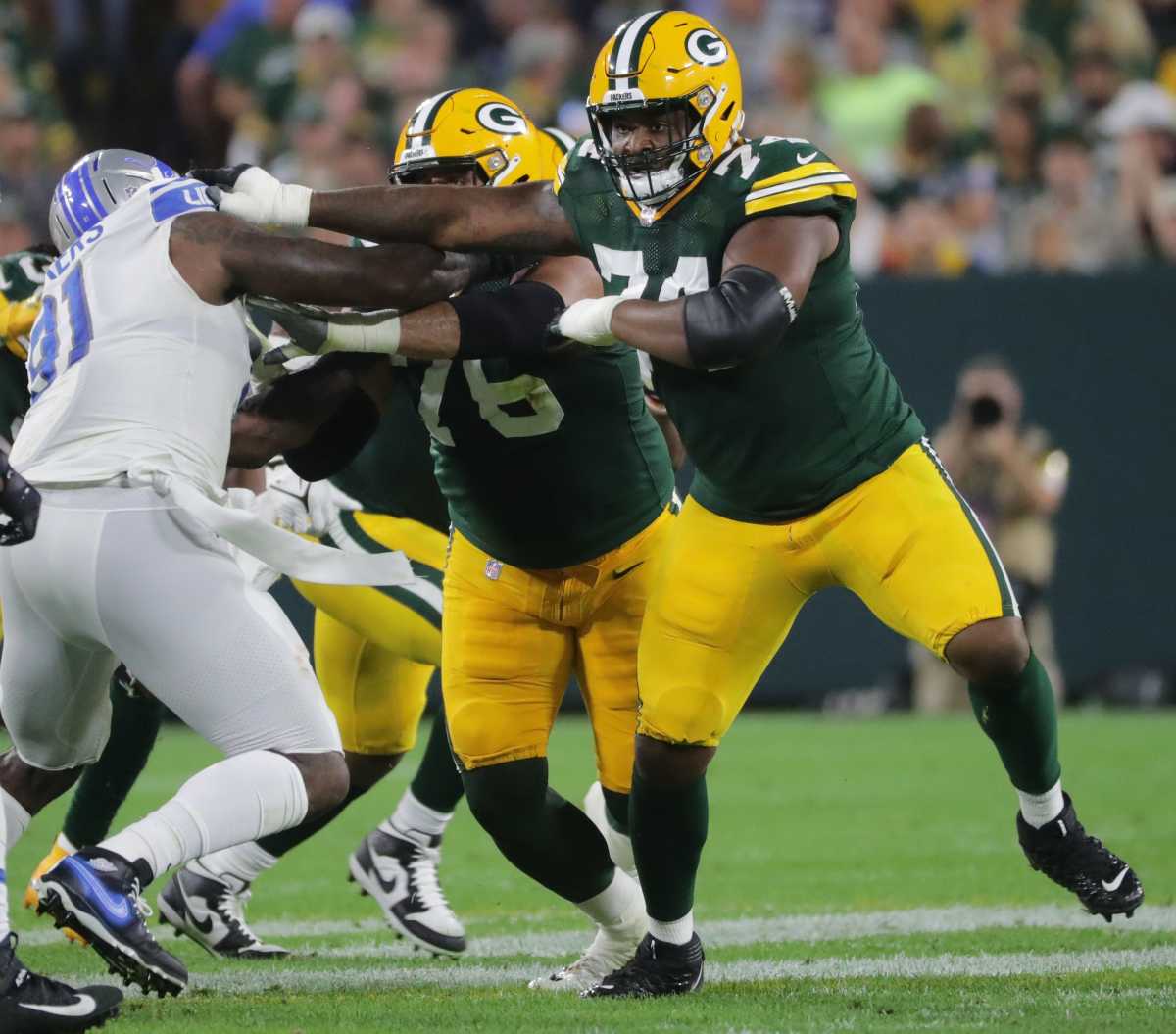
Jenkins went from being hailed as one of the top guards in the NFL as a Pro Bowler in 2020 to one of the best offensive linemen, period, in 2021, when he capably replaced Bakhtiari at left tackle. Before he suffered a torn ACL at Minnesota in Week 11, he was absolutely tremendous.
Of 67 offensive tackles with at least his 496 snaps, he ranked 16th in PFF’s pass-blocking efficiency, which measures sacks, hits and hurries per pass-protecting snap. SIS charged him with zero blown blocks in the run game. (A blown block is defined as any time a blocker does not successfully block the defender he attempted to engage with and gave the defender an opportunity to negatively affect the play). Of every lineman in the NFL who played at least Jenkins’ 176 snaps as a run blocker, he was the only one with a blown-block rate of 0.0 percent.
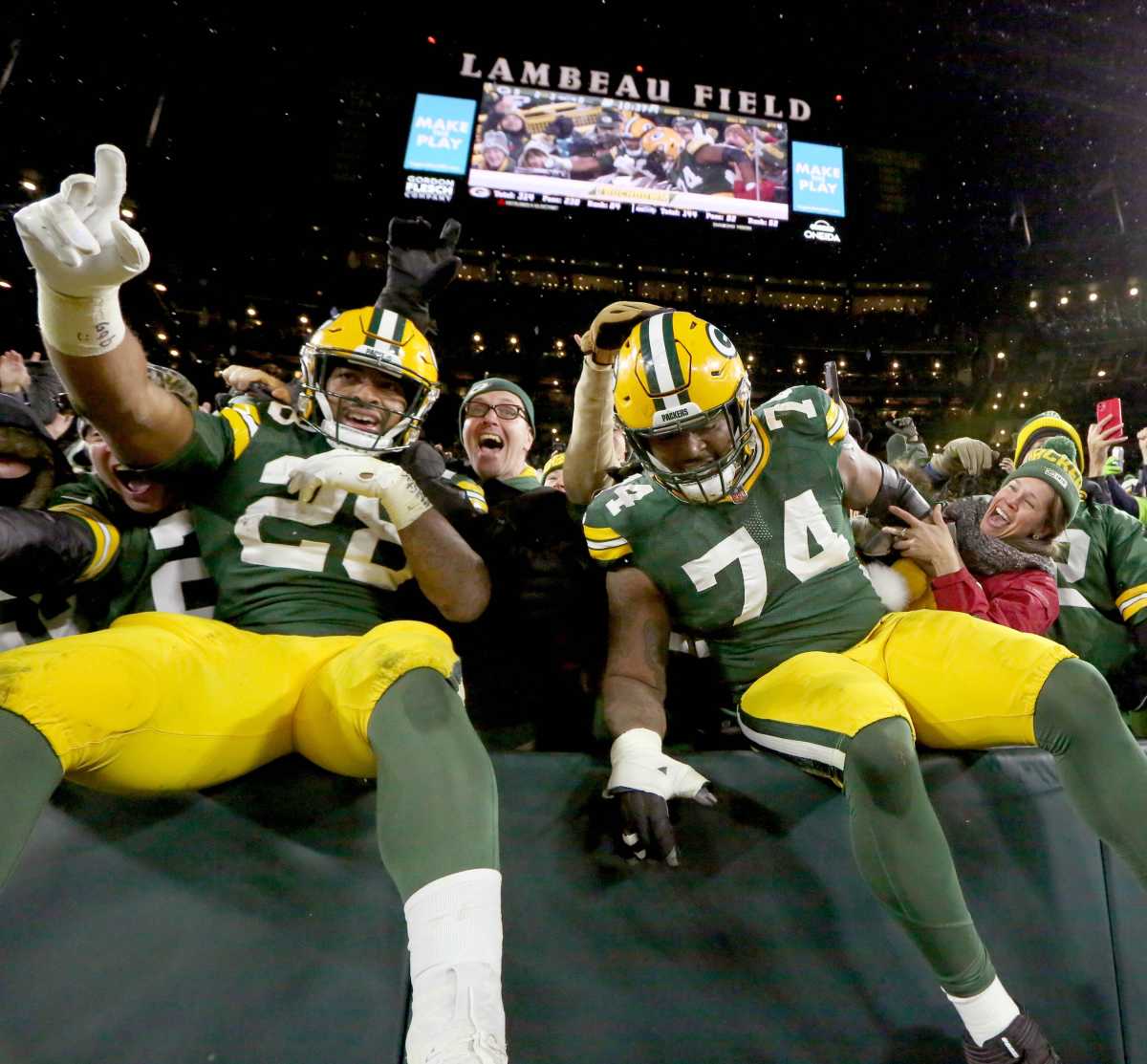
Bakhtiari’s injury shows nothing is guaranteed in coming back from a torn ACL. Nonetheless, a 10-month recovery would get Jenkins on the field by late September. When he does come back, where will he line up? Will he back at left guard? Or how about right tackle if the Packers don’t bring back Billy Turner? That question not only will be important for the Packers but for Jenkins, who will be entering his final season under contract knowing that tackles get paid more than guards.
The grade doesn’t measure Jenkins’ performance – that’s an easy “A” for his eight games – but is a reflection of missing so much time.
Grade: C.
C Josh Myers ($1.01 million cap charge; ranking No. 35 among OCs)
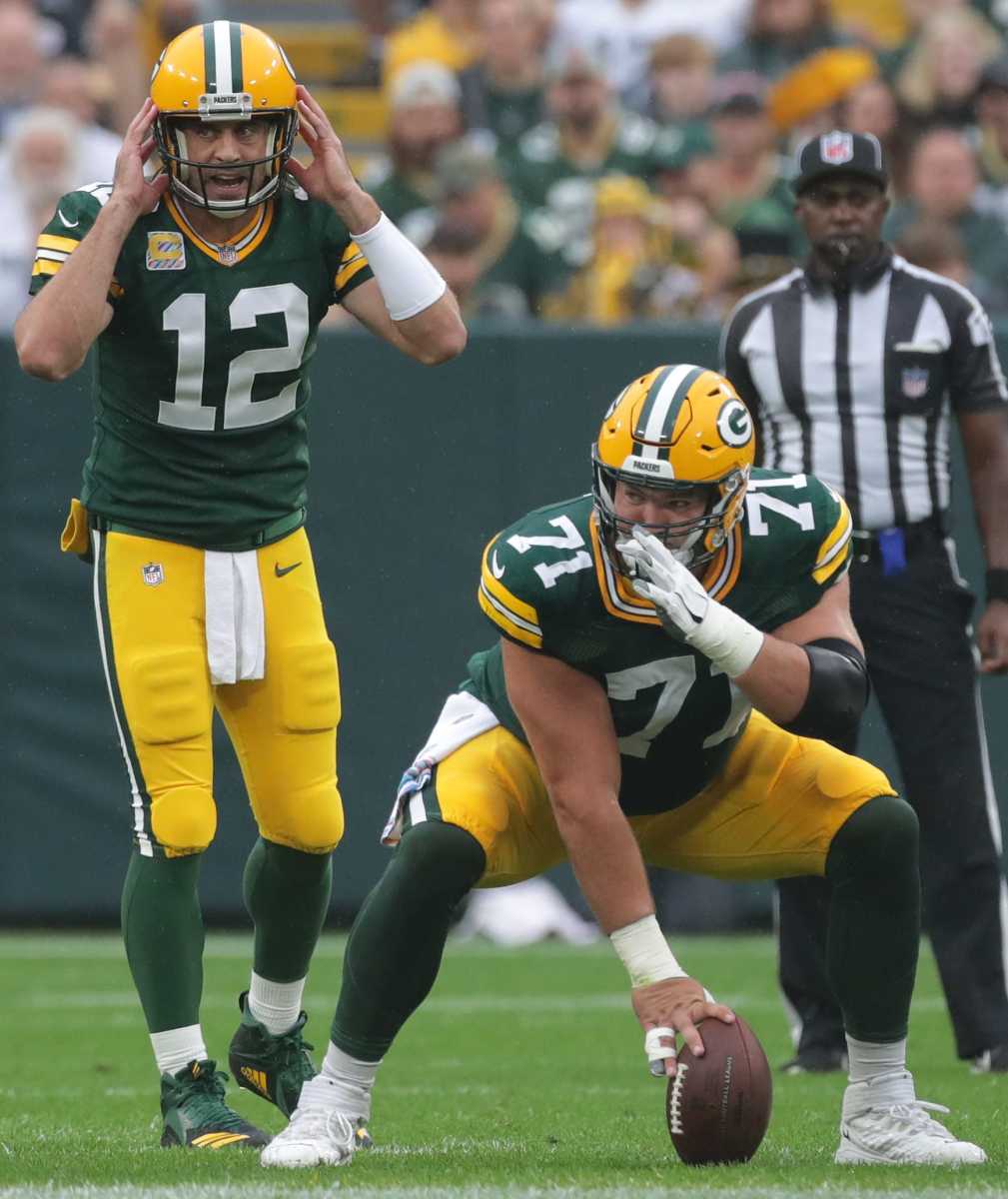
A second-round pick this year, Myers was handed the starting job at center. It was a challenging season, starting with a broken finger that sidelined him for the Week 5 game at Cincinnati when it became infected. He returned for Week 6 at Chicago but suffered a torn MCL on his fourth snap. That injury kept him out for almost three months before returned for the finale at Detroit.
Officially, Myers started six games. In reality, he played in about 4 1/2, which is reflected in the grade. Of the 39 centers who played at least Myers’ 293 snaps, he ranked 29th in PFF’s pass-blocking efficiency with zero sacks and eight total pressures. In the run game, he had one blown block for a blown-block rate of 0.9 percent. He was not penalized.
It’s too early to say which team won the NFL Draft, but the Packers selected Myers at No. 62 overall and the Chiefs selected center Creed Humphrey at No. 63. Generally considered the best center in the draft, Humphrey was first-team all-rookie after allowing one sack and 10 total pressures and a blown-block rate of 0.8 percent while starting all 17 games.
Grade: D-plus.
RG Royce Newman ($784,836 cap charge; ranking No. 100 among OGs)
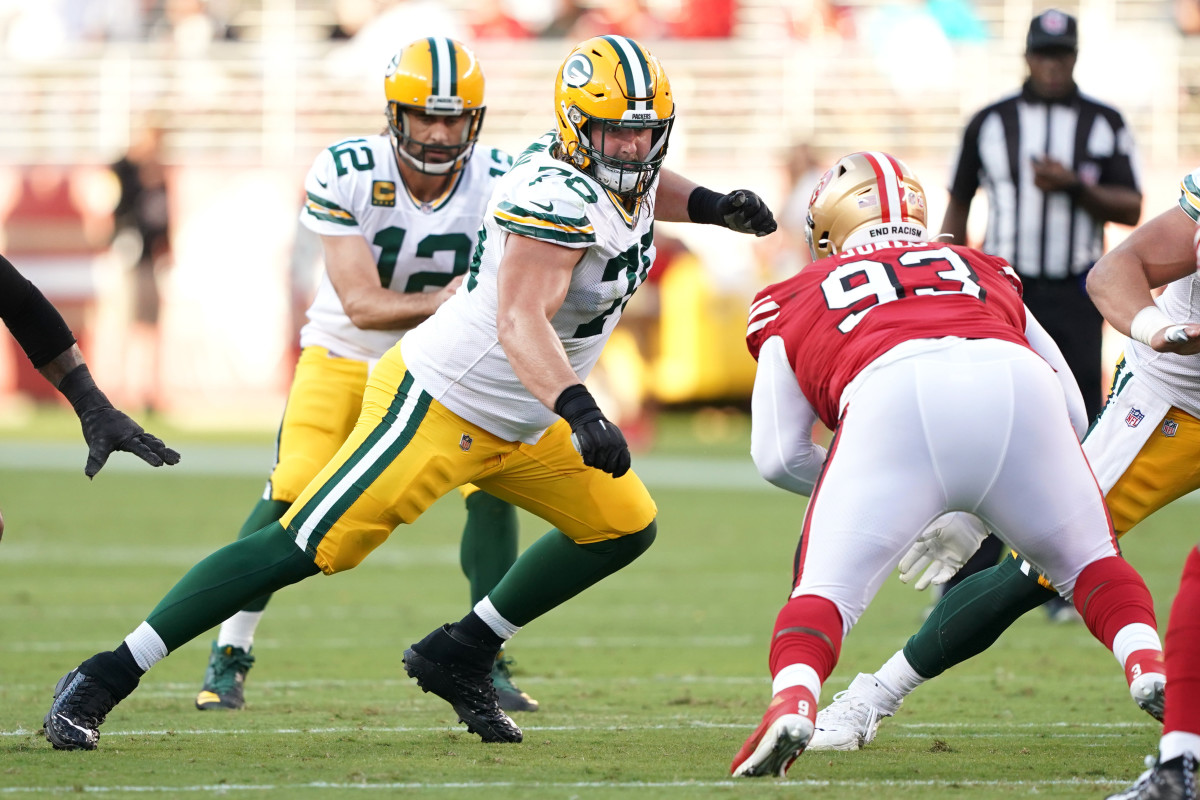
Newman was a surprise fourth-round pick after starting at guard and tackle at Ole Miss. A scout at the time noted Newman’s position flexibility but said he wasn’t good at any of those positions. With a late push, he earned a spot in the starting lineup coming out of training camp. He started the first 16 games, enduring some obvious rookie struggles before settling in and playing much better from a fundamentals and awareness perspective down the stretch.
According to PFF, 63 guards played at least half the offensive snaps. Newman finished 39th in its pass-blocking efficiency with six sacks and 32 total pressures. However, he allowed only one sack during the final eight games. SIS charged him with nine blown blocks in the run game (2.3 percent). He was penalized five times (three holding).
With the return of Myers, veteran Lucas Patrick slid over to right guard and Newman was benched for the finale and the playoff game. Still, with all that experience (an offense-high 1,084 snaps), a strong second season should be the expectation.
Grade: C-plus.
RT Billy Turner ($4.85 million cap charge; ranking No. 43 among OTs)
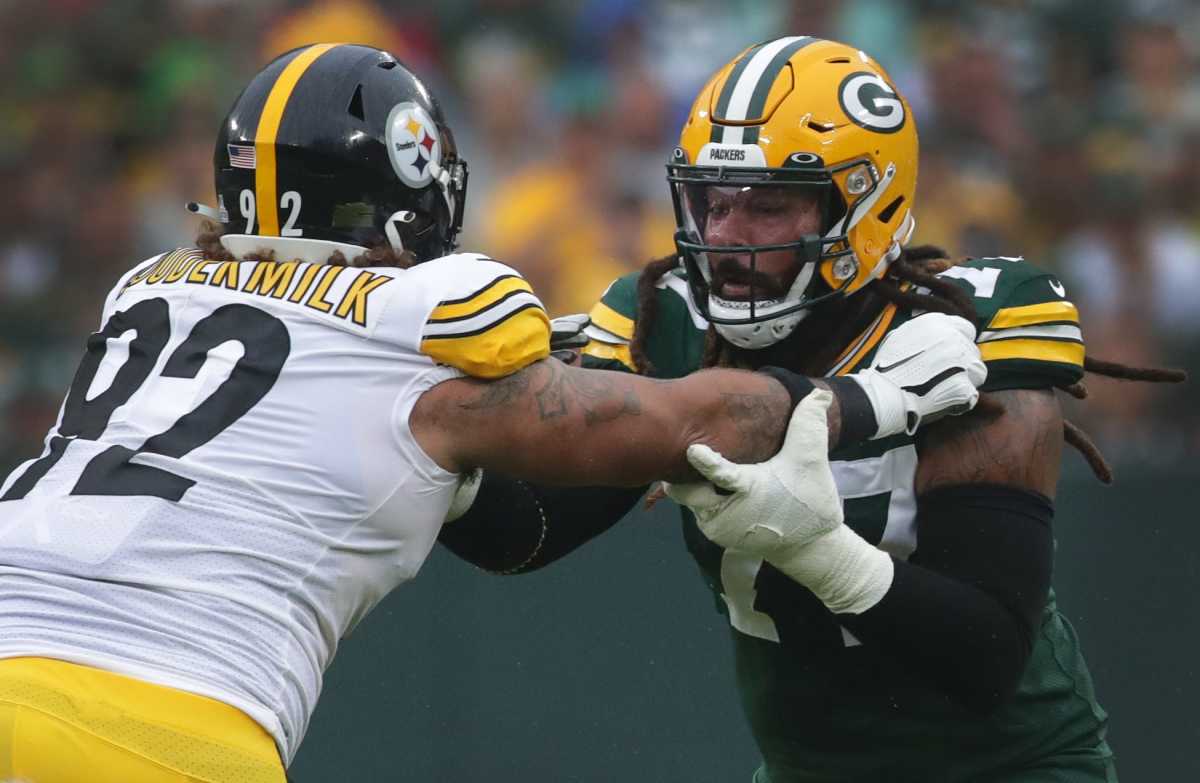
Turner started the first 13 games before joining Bakhtiari, Jenkins and Myers on the sideline with knee injuries. Quarterback Aaron Rodgers hyped him as a Pro Bowl-caliber right tackle. That might have been a bit of hyperbole but Turner was having perhaps his best season before the injury.
According to PFF, 58 offensive tackles played at least 590 snaps. Turner ranked 40th in its pass-blocking efficiency with three sacks and 32 total pressures. SIS only charged Turner with one sack – a far cry from 12 as the right guard in 2019 and five as the right tackle in 2020. In the run game, he was charged with seven blown blocks (2.4 percent). He was penalized three times (two holding).
Turner returned for the playoff game against San Francisco and got the call at left tackle. It was a surprising decision by coach Matt LaFleur, considering Turner’s layoff and how well Yosh Nijman played there earlier in the season. Turner wasn’t the problem against the 49ers, though. With a cap charge of $9.17 million for 2022, the Packers could move on and save about $3.36 million.
Grade: B-minus.
OT Yosh Nijman ($850,000 cap charge; ranking No. 111 among OTs)
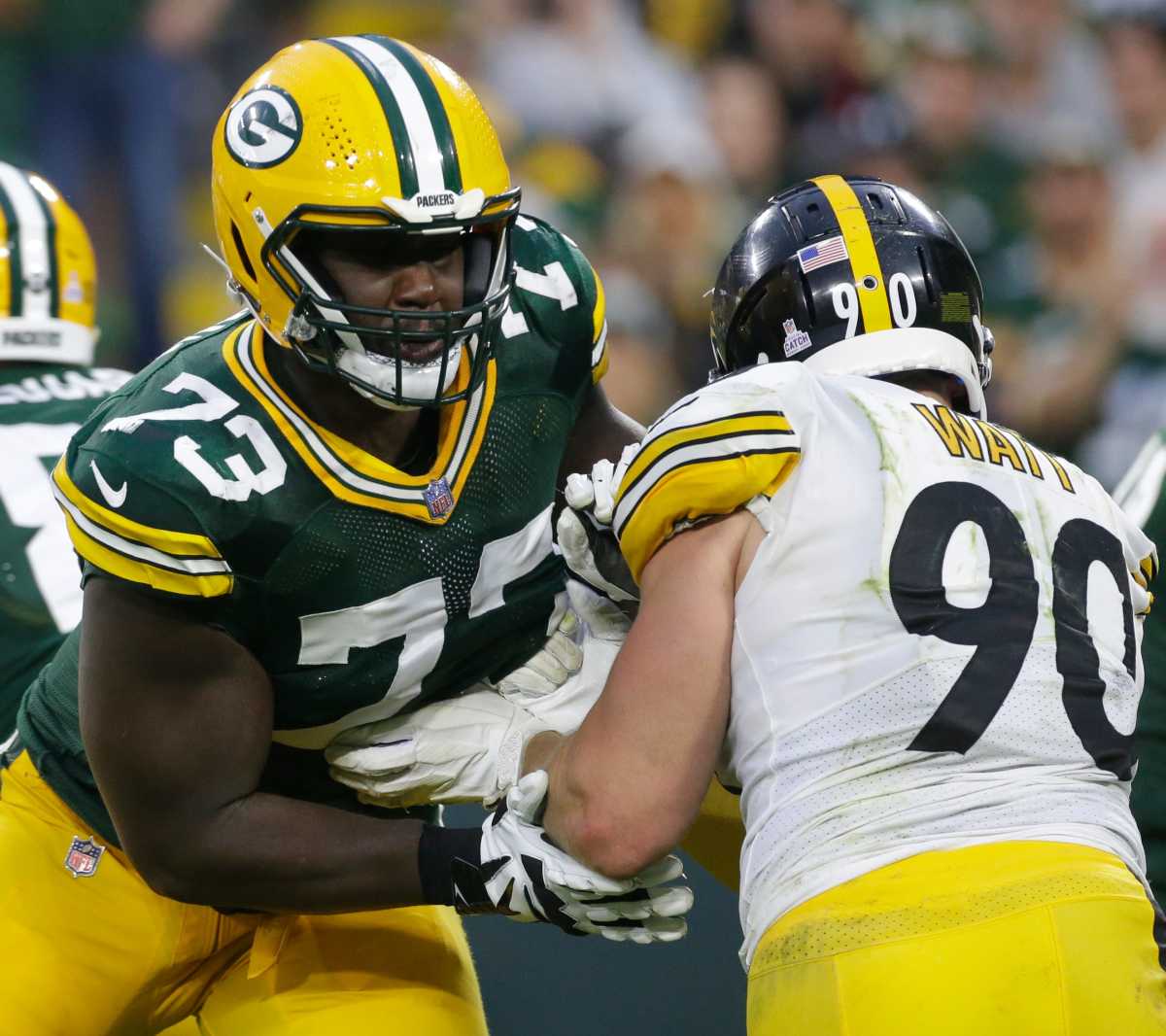
Nijman was one of the great stories of the season. An undrafted free agent in 2019, he hadn’t played a single meaningful snap from scrimmage before offensive line coach Adam Stenavich picked him to replace Elgton Jenkins at left tackle for the Week 3 game against Nick Bosa and the 49ers. No challenge, right? Nijman held his own in that game and really became an asset.
He wound up starting eight games. Of the 58 offensive tackles to play at least Nijman’s 590 snaps, he finished 31st in PFF’s pass blocking efficiency with three sacks and 20 total pressures. Remember, he was playing left tackle, which meant games against premier pass rushers such as Bosa, Cincinnati’s Trey Hendrickson (first in pressures from the defense’s right side), Cleveland’s Myles Garrett (second) and Chicago’s Robert Quinn (fourth). SIS charged him with seven blown blocks in the run game (3.2 percent) but he generally was an asset in that part of the game. He was guilty of two penalties (zero holding).
After such a promising season, will the Packers give him the job at right tackle for next season? Or will his lot in life be the swing tackle?
Grade: B-plus.
OT Dennis Kelly ($1.33 million cap charge; ranking No. 83 among OTs)
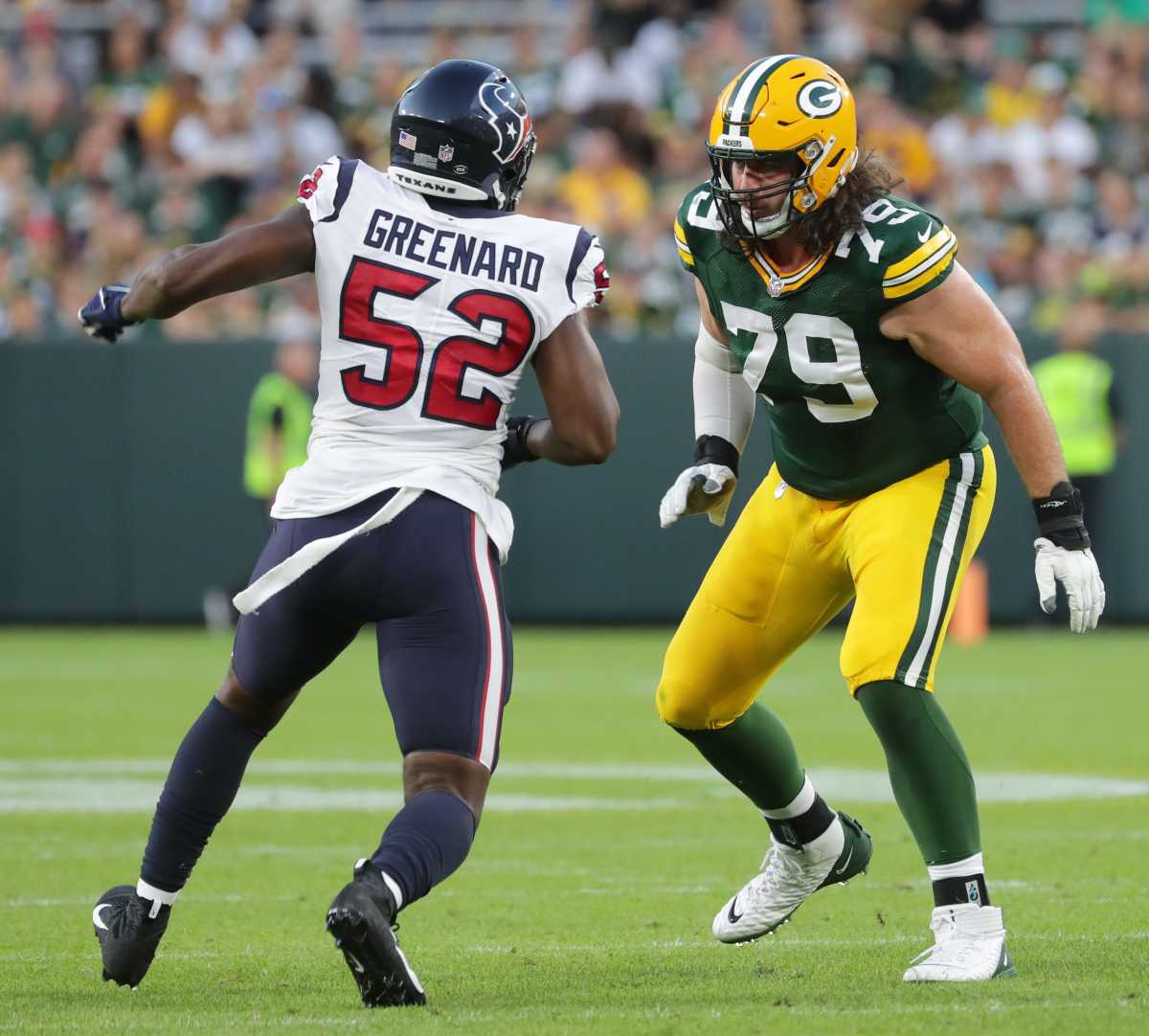
First-round draft picks and big moves in free agency get the headlines, but it’s the understated moves that make a quality general manager. That includes general manager Brian Gutekunst’s addition of defensive stars De’Vondre Campbell and Rasul Douglas but also Kelly, who was signed at the start of training camp. Kelly, who turned 32 last month, was a 16-game starter last season for Tennessee who was signed to provide key depth with Bakhtiari out of action.
For Green Bay, he played a total of 21 snaps – all on special teams – through Week 13. Then, Turner went down and the glass was broken on the fire extinguisher that was Kelly. In about 4 1/2 games, he was excellent. He allowed one sack and four total pressures and proved to be an excellent run blocker. The playoff game didn’t go nearly as well, though. Charged with blocking Bosa, PFF charged him with one sack – a drive-killer late in the first half – and five pressures. Kelly will be a free agent; the Packers could do a lot worse than bringing him back.
Grade: C.
G/C Lucas Patrick ($2.09 million cap charge; ranking No. 40 among OGs or No. 24 among OCs)
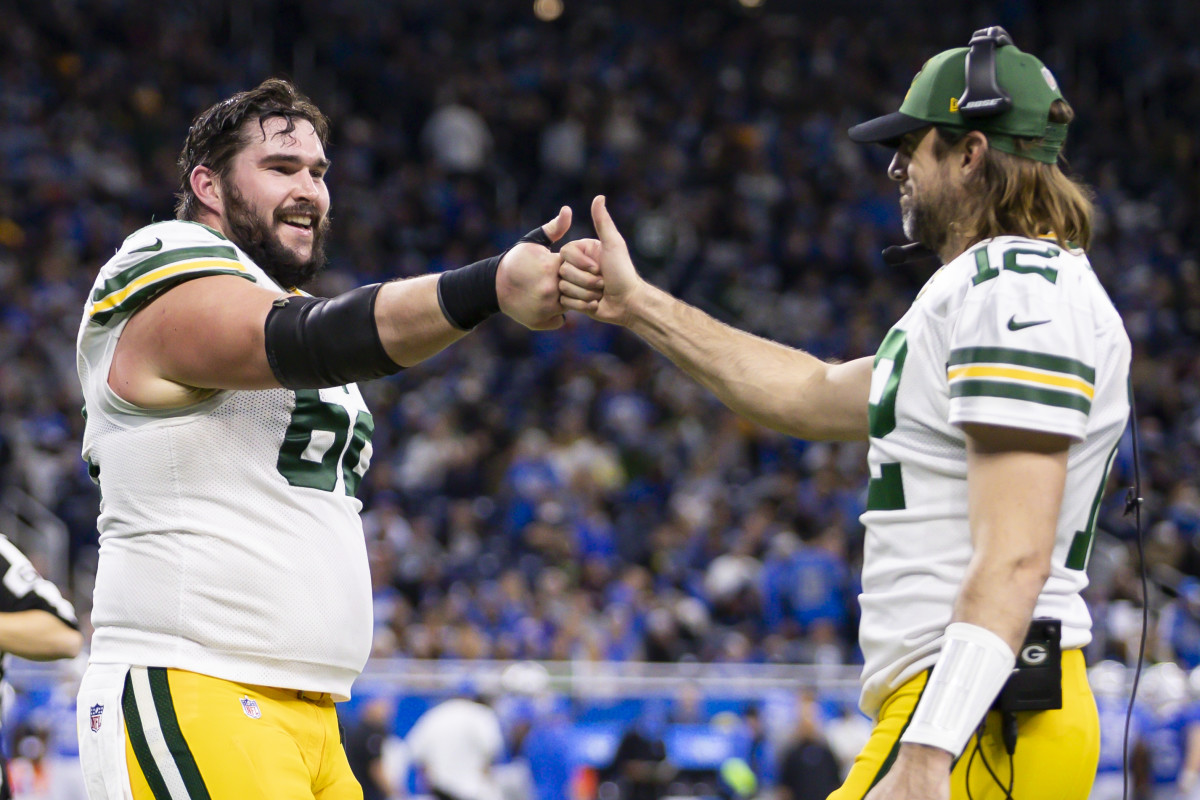
The Packers try to get rid of Patrick every season, it seems. And every year, he grabs a more and more important role. Deemed a potential cap casualty, Patrick instead beat out Jon Runyan for the starting job at left guard. When he suffered a concussion at the end of the Week 1 game against Jacksonville, the door was open for Runyan to move into the starting lineup. Patrick returned to action, though, for an injured Myers and played practically every snap at center the next 12 games. When Bakhtiari and Myers were back for the finale, Patrick moved to right guard.
All told, Patrick started 13 games at those three positions. PFF charged him with one sack and 18 total pressures. Of the 39 centers who played Myers’ total of 293 snaps, Patrick ranked 14th in PFF’s pass-blocking efficiency with one sack and 18 total pressures. SIS charged him with six blown blocks (1.8 percent). He was guilty of four penalties (three holding). For a 28-year-old, his game was too up and down, and he really struggled vs. San Francisco. Free agency awaits.
Grade: C-plus.
G Jon Runyan ($823,670 cap charge; ranking No. 96 among OGs)
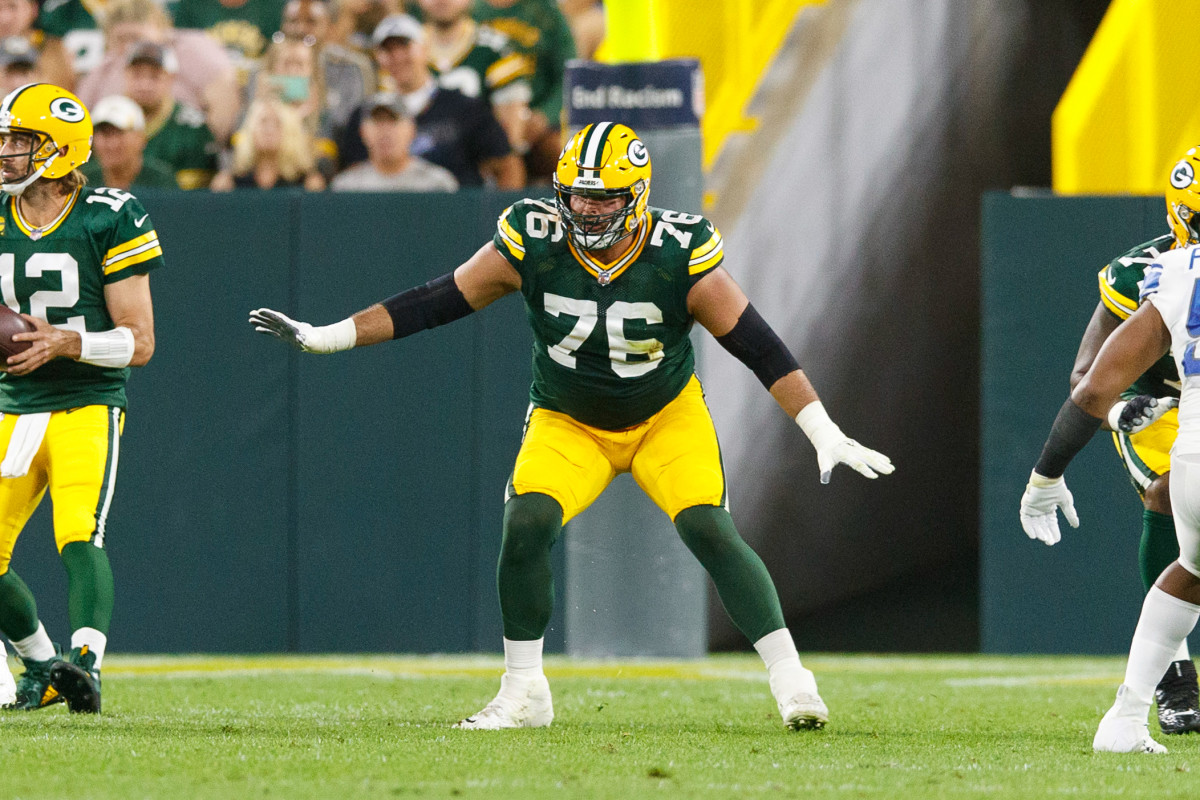
The Packers selected three offensive linemen in the sixth round of 2020. When you do such volume picking, the hope is to hit on one. The Packers probably missed on the second of those picks (center Jake Hanson), definitely missed on the third of those picks (guard Simon Stepaniak) but hit on the first of those selections (Runyan).
With Bakhtiari out and Jenkins sliding to left tackle, Runyan started the final 16 games. Of 63 guards with 50 percent playing time, he finished eighth in PFF’s pass-blocking efficiency with two sacks (both against Washington in Week 7) and 20 total pressures. According to SIS, he had six blown blocks in the run game (1.5 percent). He was guilty of one penalty (zero holding). For the price in terms of dollars and draft capital, Runyan was a big-time bargain.
If everyone is healthy for training camp, it will be interesting to see how Runyan fits in the puzzle.
Grade: B.
C Jake Hanson ($660,000 cap charge; ranking No. 56 among OCs)
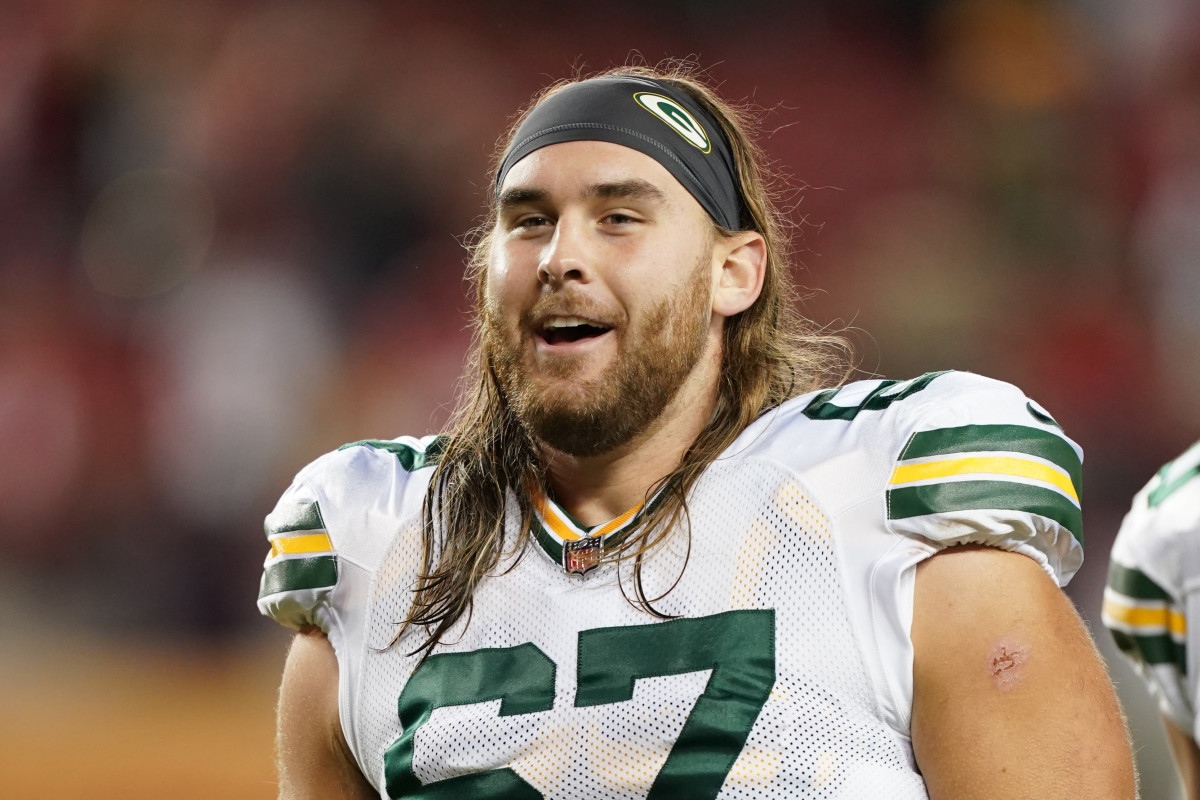
A sixth-round pick in 2020, Hanson surprisingly beat out Ben Braden for the final roster spot on the offensive line. That shows how highly the Packers value the center position. Hanson logged six snaps on offense (five vs. Kansas City) and 13 on special teams (nine vs. Cincinnati). With Patrick headed to free agency, the door potentially is open for Hanson to be the backup at the position. As quarterback Aaron Rodgers has said for the years, being the No. 2 center means a guaranteed roster spot.
Grade: F.
T/G Cole Van Lanen ($248,001 cap charge; ranking No. 140 among OGs)
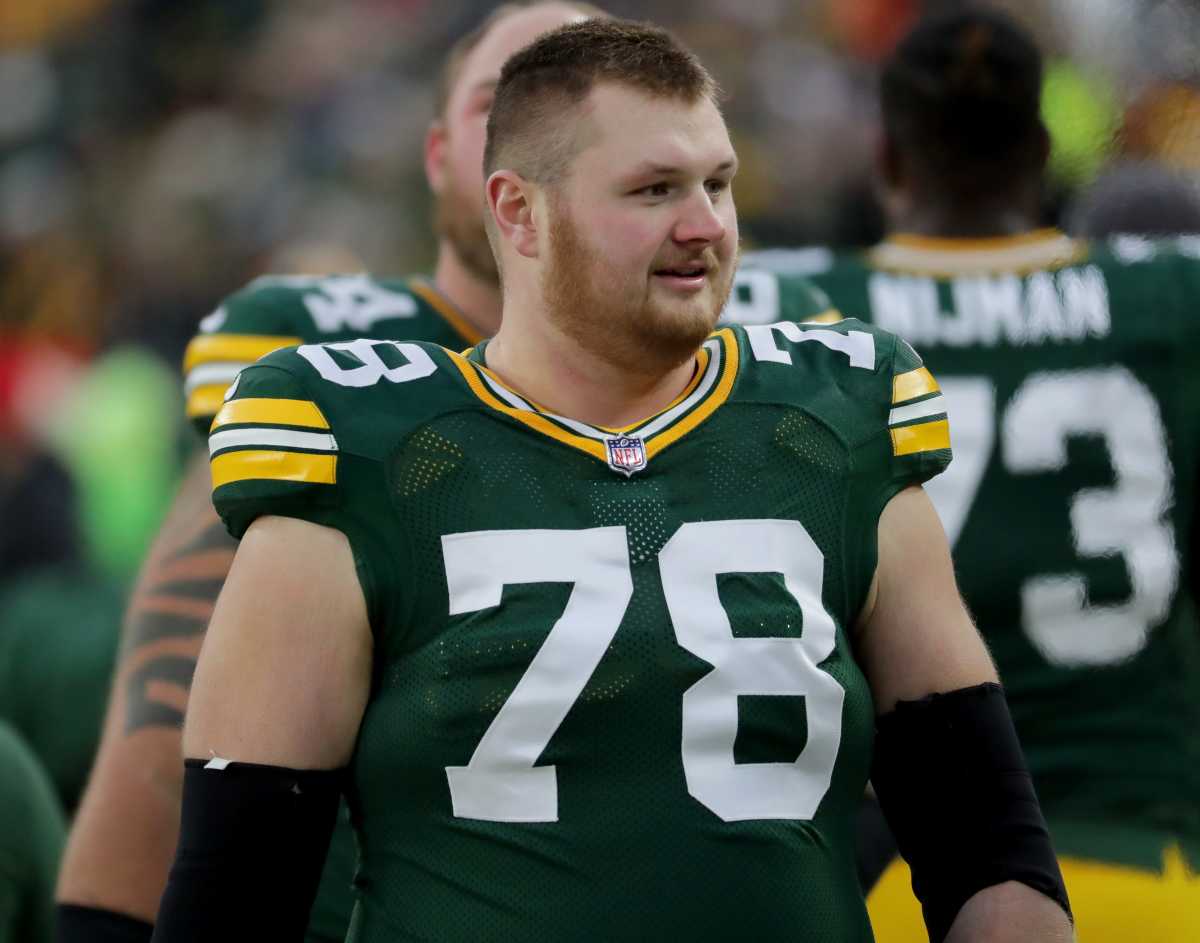
A sixth-round pick out of Wisconsin via nearby Bay Port High School, Van Lanen played one snap on offense (a kneeldown to end the Minnesota game) and zero on special teams. A left tackle for the Badgers, he spent the season at guard and right tackle. Now that the team has a feel for what he can do, it will be interesting to see if he can push for a key backup position during training camp. He must get stronger. The grade isn’t a knock on his potential.
Grade: F.
